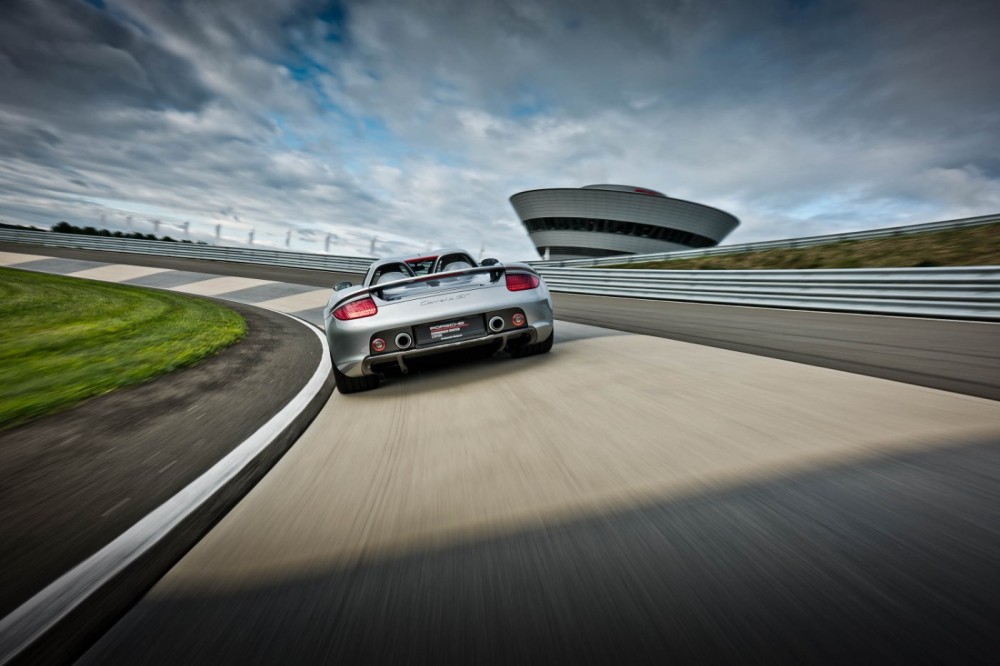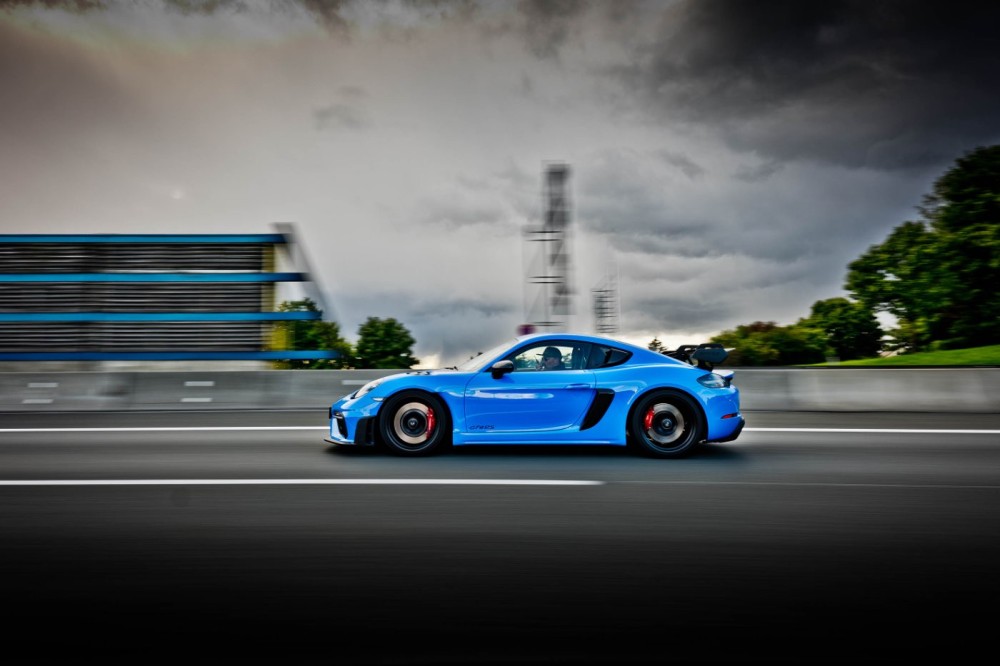Munich is like the epicenter, the starting point for every one of our CURVES trips. However, while we usually turn the map toward the south as soon as we set out, heading for the Alps, this time we’re taking CURVES in an entirely unfamiliar direction. We’re following a north-east course, toward the low mountain ranges along Germany’s eastern border. If the “locals” in Germany’s green marches protest that this definition of direction is grossly lacking in precision, lumping together their home territory with other regions, we are forced to agree: the Bavarian Forest is quite different from the Upper Palatinate. The mountains of the Fichtelgebirge are unlike those of the Erzgebirge. As soon as we find ourselves in Saxony, heading in the direction of the Elbe Sandstone Mountains, the world feels completely new.
That’s why we’ve decided to focus on the small print at this point: regular travelers in the CURVES flow usually have the essentials of the route in mind. Our aim, therefore, is to avoid a superficial mixing of the beautiful and remarkable features of all the regions along our route, but rather to describe them as intensively as possible, kilometer by kilometer. Maybe you’ll let us know at some point, after you’ve toured the area between Munich and Passau, Hof and Dresden, whether we’ve been successful in finding the right perspective and the right pace.Our observations seem to indicate that the variety of landscapes is primarily evident in the local population, their temperament and lifestyle, as well as their cuisine. In southern Upper Bavaria, knuckles of pork are wrapped in a crispy crust, and crunchy sausages, fish sticks, trout and char adorn local dinner plates. Pretzels are dipped in “Obazda”, a kind of cheese mixture, and “Leberkäse”, a popular type of meatloaf, categorically denies any link to liver or cheese despite its name. The people of Lower Bavaria are happy with this state of affairs, but have a distinct weakness for pastries: “Rohrnudeln” and “Dampfnudeln” (literally baked noodles and steamed noodles), for example, which have nothing to do with noodles, or “smooth” rye dumplings that go hand in hand with deep, dark smoked bacon. In the Upper Palatinate, people enjoy a meal of plump carp from old monastery ponds, reluctantly serving guests so-called “Bauernseufzer”. This smoked sausage is considered far too delicious to waste on strangers, explaining its off-putting name – literally “farmer’s groans”. On the Danube they favor pike-perch, in the Bavarian Forest game and homemade schnapps, while in the Fichtelgebirge mushrooms are number one on the menu. When you reach the Erzgebirge, things turn completely rustic: potato dumplings meet beef roulade or sauerbraten – a cuisine that is equally popular on the other side of the border in the Czech Republic. However, the kings of the kitchens of the Erzgebirge are potato cakes, which attract audiences as a sweet or hearty main course or are served as a striking side dish with meat dishes. However, if you order “potato cakes” in a restaurant, the waiter will look at you with a pitying smile, because the people of the Erzgebirge have more names for their pancakes than Greenlanders have for snow: “Fratzen” for example, “Klitscher” or “Latschen”, “Buttermilchgetzen” and “Heidelbeergetzen”.
The casual use of language betrays the fact that we have already reached Saxony. Even if the Saxons have to put up with a great deal of ridicule from the Western German majority for their dialect, we have a little sympathy for the Saxons’ imaginative use of language. Their defiantly cherished and cultivated way with words is clever and pithy and we love it dearly. Thick dialects are just as much part of this journey as the basic green color of the countryside. From the up-and-down guttural intonations of Upper Bavaria, to the melodious sounds of Lower Bavaria, the almost Austrian soft sing-song of the Bavarian foresters and the increasingly rasping dialects the further north you go.Travelers who are unfamiliar with Germany and its many colors will quickly learn that there is no such thing as “typically German”. And yet there is one thing that we discovered as our journey progressed: there has been a lot of philosophizing about why the German language has the unique word “Gemütlichkeit” (cozy comfort). Although the Germans have a global reputation as workaholics and joyless perfectionists, as you travel through Lower Bavaria, the Waldviertel, Thuringia and Saxony, it becomes quite clear what “Gemütlichkeit” really means: when a feeling of home and security creeps into all things, allowing the mind to calm down. The garden seat in front of your house is “gemütlich”, offering a chance to sit back and review your day’s work. “Gemütlichkeit” is when you settle down for the evening with family and friends in your living room, your stomach filled with “comfort food” and the gentle bliss of a glass of good beer spreads its magic among those present. But landscapes can also be “gemütlich” in their order, beauty and tranquility. Perhaps the closest English word for “Gemütlichkeit” would be “mindfulness”, at least scratching the surface of its meaning, but still not getting it completely right. “Gemütlichkeit” is not defined by awareness, but by the exact opposite. “Gemütlichkeit” is putting your feet up in the knowledge that God is in his heaven and all is right with the world. Why does this seem worth mentioning at this point? Because we have realized that “Gemütlichkeit” is the ideal mantra when travelling in Eastern Germany. More precisely, we have discovered it as a generalized state of the subconscious rather than a measure of speed. After all, it is quite easy to get around the rather sparsely populated areas along the border mountains: little traffic, plenty of space, great roads. The elegantly curved, well-built road network makes for smooth sailing. This is great news for the Porsche Cayman GT4 RS, loaned to us by Porsche Germany as a rambunctious traveling companion: This compact hardcore racer is most at home on the racetrack. The car’s thoroughbred credentials mean it is made for this type of locomotion, so that it quickly gets bored on normal rural roads. The fact that the generous road network in the East was able to accommodate this enthusiastically panting hound, dispensing with the banalities of stop-go traffic and enabling us to avoid too much urban driving, made it easier for us to rein in this little rascal. However, we swear that we never crossed over to the dark side of the Force. We acted as ambassadors for law-abiding driving, sometimes traveling fast, but never speeding, hand on heart – Well… once we let it rip: the GT4 RS was allowed to take us to our limits on the racetrack of the Porsche factory in Leipzig. Our knees are still trembling from the experience. We’d like to say a big thank you to Porsche for that opportunity and for lending us such a great car. Likewise at this point, we would like to express our gratitude to the museums in Amerang, Zwickau and Zschopau. We still get goosebumps when we think of how accurately you celebrated the sublime art of appealing to the esthetic senses of technology enthusiasts. We are big fans of what you do and we hope that you get what you deserve: namely that the CURVES community will be pounding on your doors once this issue is published. Finally, a big thank you to Walter Röhrl. We send a hearty “full throttle” salute to the man with clearest ever concept of the ideal line, honorary ambassador of the Bavarian Forest and an eternal inspiration for CURVES. Thank you, Walter, for permitting us to make a pit stop at your home.




































